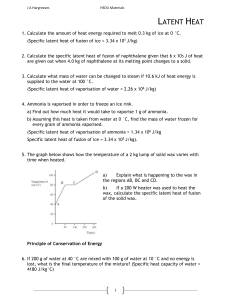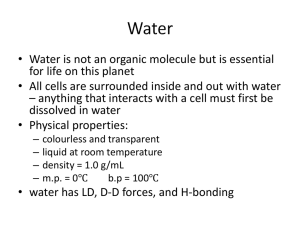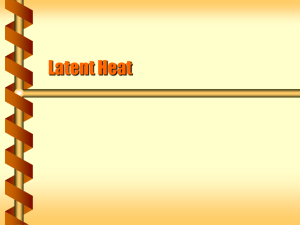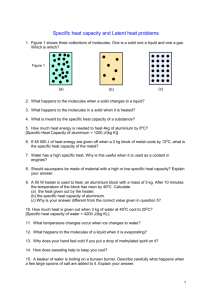Thermal Physics 2 - Latent Heat
advertisement
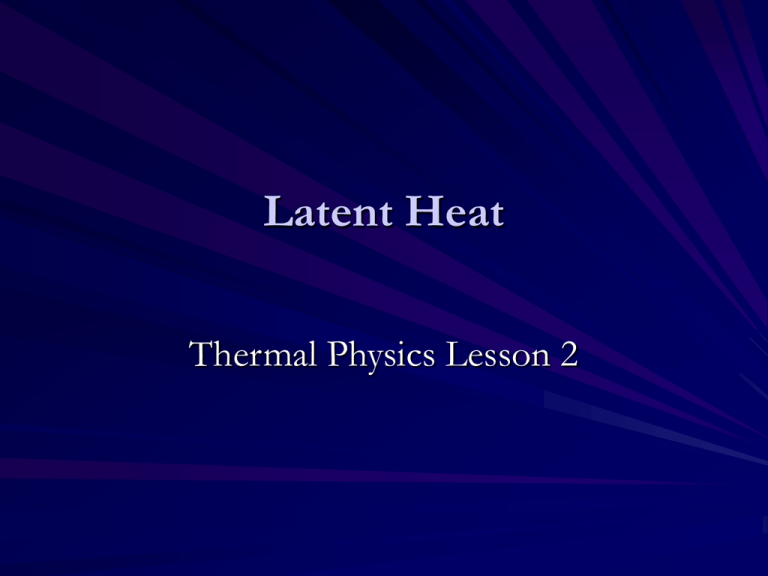
Latent Heat Thermal Physics Lesson 2 Learning Objectives Define specific latent heat. Perform calculations using ∆Q=ml. Describe how specific latent heat of fusion/vaporisation can be measured in the lab. Explain why energy is needed to evaporate a liquid/melt a solid Safety Students must not sit down to watch this experiment - serious scalding has occurred when the beaker breaks or falls and the pupil has been unable to move away instantly. Heating/Cooling Curves Remember from GCSE? Demonstration What tells you the water is boiling? So energy is being supplied but the temperature is not rising? What is going on? Work is being done to separate the particles against intermolecular attractive forces. shc vs. latent heat (simple terms) Specific Heat Capacity:Energy needed to heat something Latent Heat:Energy needed to change phase Definition The specific latent heat (l) of fusion or vaporisation is the quantity of thermal energy required to change the phase of 1kg of a substance. Fusion (liquid solid) Vaporisation (liquid gas) …or the other way (Melting/Condensing) Equation Q ml where:∆Q is the energy change in J m is the mass of substance changing phase in kg lv is the latent heat of vaporisation in J kg-1 lf is the latent heat of fusion in J kg-1 Worked Example 1 The specific latent heat of fusion (melting) of ice is 330,000 J kg-1. What is the energy needed to melt 0.65 kg of ice? Worked Example 1 The specific latent heat of fusion (melting) of ice is 330,000 J kg-1. What is the energy needed to melt 0.65 kg of ice? Q ml ∆Q = ml = 0.65 kg × 330,000 J kg-1 = 210,000 J (2 s.f.) Worked Example 2 The power of the immersion heater in the diagram is 60 W. In 5 minutes, the top pan balance reading falls from 282g to 274g. What is the specific latent heat of vaporisation of water? (resourcefulphysics.org) Worked Example 2 The power of the immersion heater in the diagram is 60 W. In 5 minutes, the top pan balance reading falls from 282g to 274g. What is the specific latent heat of vaporisation of water? P = 60 W ∆ t = 5 minutes = (5 × 60)s = 300 s m = m2 - m1 = 282g – 274g = 8g = 0.008 kg lv = ? Energy P t Q ml ∆Q = P∆ t = 60 W × 300s = 18,000 J lv = ∆Q/m = 18,000 J / 0.008 kg = 2.3 × 106 J kg-1 (2 s.f.) (resourcefulphysics.org)


